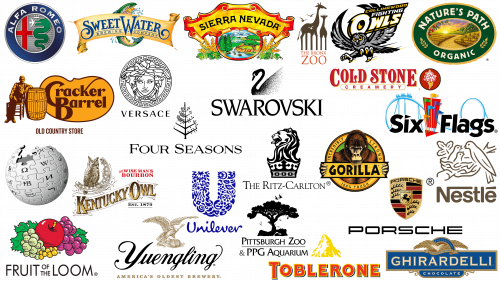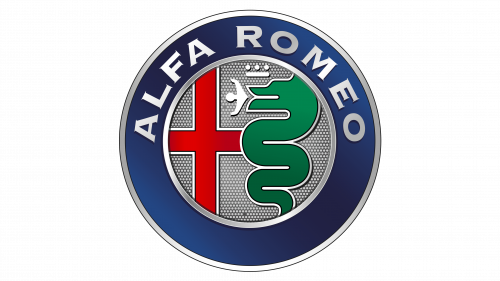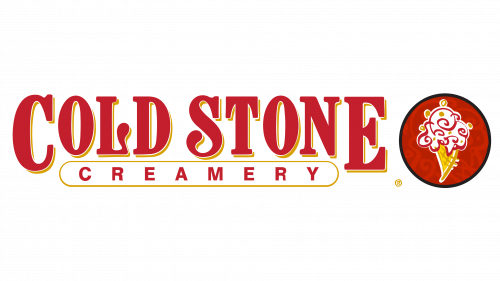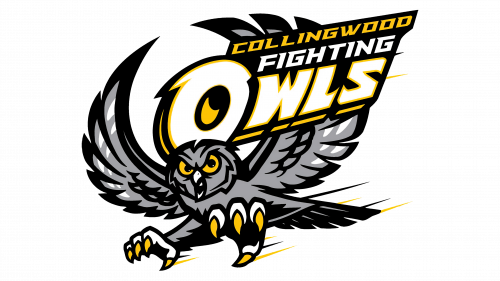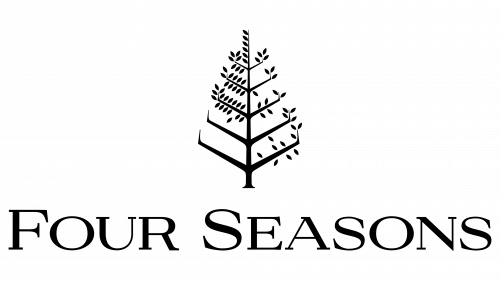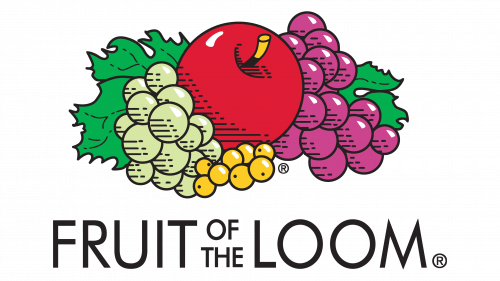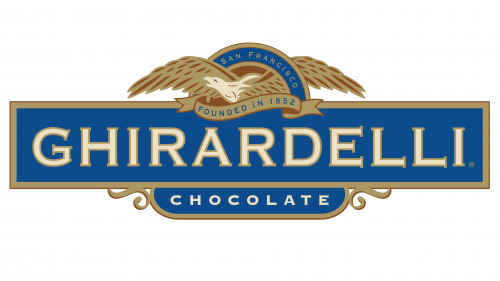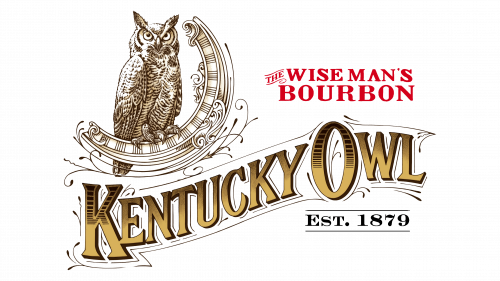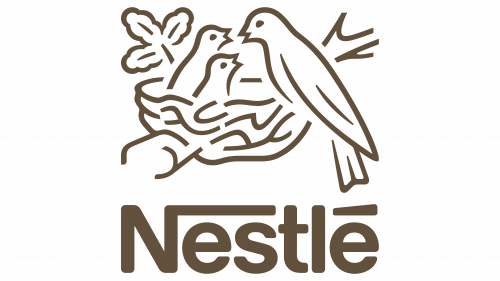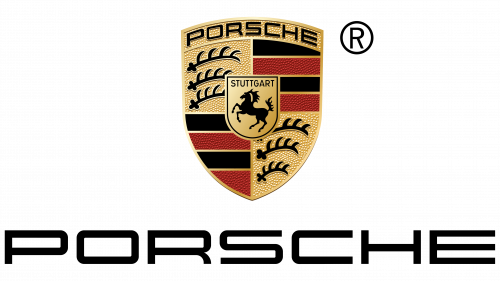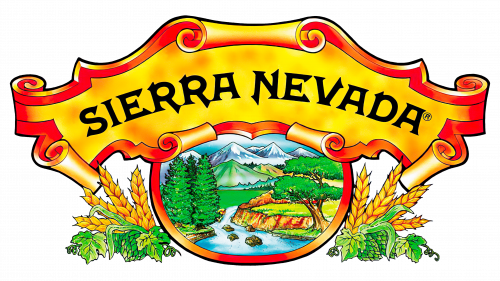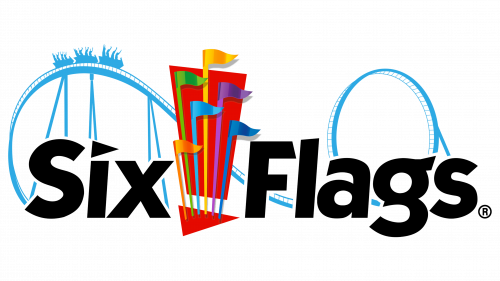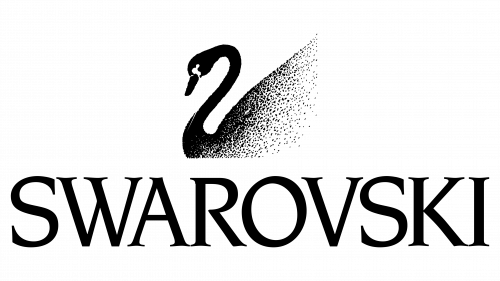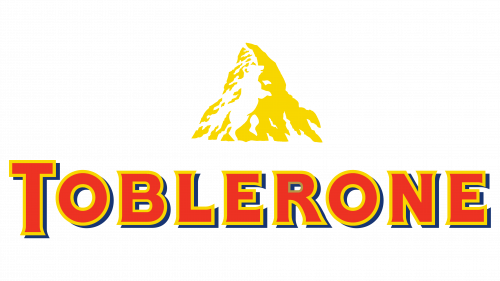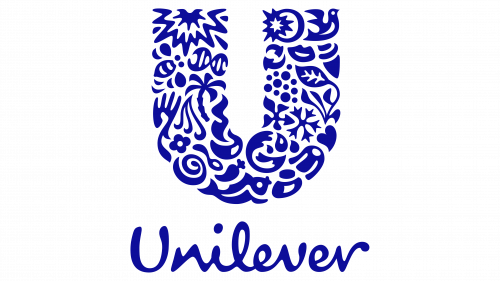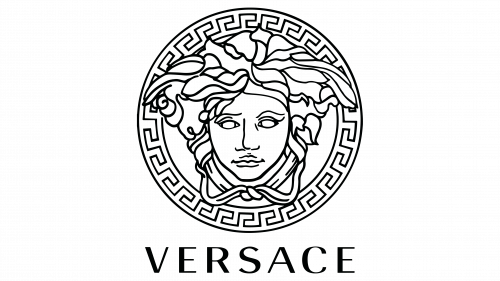In the old days, complex and detailed logos were the norm for many businesses. This was an era when corporations sought to fill their logos with a lot of information. The goal was clear – to stand out, resonate emotionally, and cement their identity in the minds of their audience. During this period, it was safe to experiment with intricate designs, as adapting to digital technology was not an issue. The need to provide an eye-catching design look on an app icon or mobile display was not a challenge that brands faced.
As the technology landscape evolved and consumer preferences changed, the trend of detailed logos began to wane. The modern era began to favor minimalism. The main concern now became to create an easily recognizable logo that could be adapted to various digital platforms. Most modern logos gravitate towards a straightforward design, often just shapes or word marks devoid of unnecessary embellishments.
The branding world hasn’t completely said goodbye to multifaceted logos. Some brands today still retain intricate designs that testify to a bygone era or the uniqueness of the brand’s history. When doing branding, you can still find examples of such detailed logos today that have survived the shift in design aesthetics.
Is a complex logo good for a brand?
The choice between a complex or simple logo often depends on the industry and brand positioning. For example, the luxury car sector often gravitates towards more detailed designs. Cult brands such as Porsche and Lamborghini often set the tone for competitors with their rich detailing.
The tech industry is characterized by logos that lean toward minimalism. Brands like Slack, Spotify, and Airbnb demonstrate this trend by using abstract or geometric symbols.
Many branding professionals lean toward keeping things simple in logo design. The main goal of a logo is to create a memorable image that will resonate with consumers. A logo with fewer elements makes it easier for the target audience to remember and recognize. The minimalistic design is easily adaptable to different platforms, making it versatile. Such logos turn into icons for digital interfaces such as apps or mobile displays.
The role of sophisticated logos cannot be downplayed. In the right context, a detailed logo can emphasize the professionalism of a brand.
The essence of logo design is to align it with the brand’s goals and desired image.
Complex logo examples: Today’s complicated logos
With the passage of time, there has been a noticeable shift in the field of logo design. In previous eras, intricate and detailed logos flourished. The pendulum of design preferences has swung, and modern companies are increasingly gravitating towards simplicity and minimalism in their brand emblems.
Suppose you consider the evolutionary trajectory of Apple’s emblem design. What started as a multi-colored apple eventually evolved into a single-colored, elegant symbol. Similarly, Starbucks, once adorned with detailed text around its iconic mermaid, has now opted for a cleaner, more streamlined version of the mermaid, devoid of surrounding text.
Complexity in design hasn’t disappeared entirely. Even in the age of minimalism, some brands continue to champion complex design. Such emblems, rich in layers and nuance, challenge the prevailing design ethic.
Alfa Romeo
Alfa Romeo is a brand that has a rich heritage of automotive excellence. Founded in 1910, the Italian automaker has retained several key components of its corporate identity over the years, though these elements have undergone various tweaks to adapt to modern requirements.
One of the most striking features of the emblem Alfa Romeo is the use of the snake Biscione, the image of which is firmly associated with Milanese legends. This symbol, created under the direct influence of the Filarete Tower of Biscione Visconteo, not only emphasizes the brand’s geographical connection to Milan but also includes a fascinating plot in which a man is devoured by a huge snake. Incorporating folklore and place into the brand image links historical narratives and contemporary identity, differentiating Alfa Romeo from its competitors.
The element of architectural reference to the Filarete Tower reinforces the cultural depth of the brand. This reference connects the emblem with a specific place, environment, or civilization that has stood the test of time.
The Alfa Romeo emblem is a sign of automotive luxury and excellence, as well as a carefully crafted story about the brand’s heritage, place of origin, and unique position in the automotive industry.
Bronx Zoo
The Bronx Zoo emblem is an elegant, layered logo similar to that of the Pittsburgh Zoo. Dating back to 1899, the Bronx Zoo has grown into a renowned wildlife sanctuary and one of the most extensive places to observe many species of animals in the United States.
Like the Pittsburgh Zoo’s highly detailed and engaging logo, the Bronx Zoo logo features images of a variety of animals, including but not limited to birds and giraffes. But it is in the nuances that the design becomes particularly intriguing. Within the giraffes’ tall legs lurks a shrewd observer.
This sophistication in the design of the emblem serves two purposes. First, it reflects the geographical nature of the zoo’s location, intertwining with the nature the institution seeks to preserve. Second, it encourages viewers to look more closely, encouraging them to discover the hidden elements of the emblem and explore the zoo to discover its wonders.
Cold Stone Creamery
Fans of frozen goodies are likely to love the Cold Stone Creamery logo. The Cold Stone Creamery logo is synonymous with quality and enjoyment and is considered a leader among ice cream brands, especially in the United States.
The international ice cream chain was founded in 1988, and its logo exudes a vintage charm, hinting at a heritage that may seem much older than its actual age. The genius of the Cold Stone Creamery brand lies in its combination mark: a detailed image of an ice cream cone adorned with red dynamic swirls that seem to dance around the creamy treat. This vivid image is seamlessly combined with an exquisite serif wordmark in passionate red.
The choice of colors, especially the vibrant red, and the careful detailing of the design evokes a sense of delight and excitement. This visual delight, like the delicious cocktails the brand is known for, serves as a testament to its desire to create memorable experiences for its customers.
Collingwood Fighting Owls
In sports branding, team logos are particularly intricate and contrasted with logos in industries such as e-commerce or retail. These logos are carefully crafted to appeal to a wide range of viewers.
The Collingwood Fighting Owls, a team representing college soccer, strategically chose a colorful owl as the centerpiece of their branding. This choice isn’t just aesthetic: the detailed owl image symbolizes the team’s spirit and tenacity. The design intricacies embedded in the logo give the owl a dynamic feel and suggest a rapid descent towards the goal.
The lines wrapping around the bird indicate its quick movement and agility, reinforcing the sense of action. These designs make the logo visually appealing, characteristic of the sport.
Cracker Barrel
Cracker Barrel holds a special place in the pantheon of American culinary establishments, in part because of its intricate logo that reflects a deep heritage. Founded in 1969, Cracker Barrel serves a dual function as a Southern rustic gourmet menu. At the same time, it operates as a retail boutique, offering diners a variety of gifts and accessories.
The focus on Southern traditions is not limited to the food; it permeates the atmosphere of the establishment. The interior décor echoes this Southern style, creating an atmosphere of hospitality and homeliness reminiscent of an earlier era in American history.
The logo, designed in an elaborate color palette dominated by brown and gold, depicts an elderly gentleman, reminiscent of bygone times, sitting casually on a wooden chair. His posture, leaning on a large barrel, suggests a leisurely, less hurried time. The intricate details of his attire, from the folds of the cloth to the cut of his coat, add complexity to the emblem, making it rich in subject matter.
Next to this image is a stylized word mark, which is also eye-catching. It uses an innovative design technique – the letters “B” and “C” are artfully combined, giving the emblem an artistic flair and contrasting with its vintage appeal.
Four Seasons
Recognized worldwide as the epitome of luxury and hospitality, Four Seasons has been a symbol of the hotel and resort industry since its founding in 1961. With over one hundred hotels worldwide, this prestigious hotel chain has become the preferred choice for many, including famous personalities and celebrities.
The brand name “Four Seasons” perfectly captures the essence of timeless hospitality. This promise of unwavering luxury and comfort guarantees guests unrivaled service in any season and in any weather.
A closer look at the Four Seasons logo reveals carefully crafted design details consistent with the brand. It’s an exquisite wordmark with serifs topped with an image of a tree. It’s not just any tree: the careful segmentation of its leaves illustrates the cyclical nature of the four seasons. Each quadrant of leaves indicates a particular season, from spring blossoms to winter snow on the branches.
Fruit of the Loom
Fruit of the Loom is a testament to the consistent quality and brand recognition in the textile industry. The American company, founded in 1851, has been observing changes in the fashion world for over a century, staying true to its core emblem. The company offers a wide range of products, from casual wear to stricter corporate attire.
The emblem representing Fruit of the Loom today is bright and memorable. The chosen image is simply a nod to the brand name and an artful depiction of various fruits. Each fruit is depicted with meticulous detailing accompanied by different levels of shading, giving depth and dimension to the entire design. This detailing works perfectly with the brand name placed underneath the fruit. The typography chosen is a sleek sans serif font, giving the ensemble a modern look.
The combination of intricate artwork and modern typeface provides a balance between traditional art and modern aesthetics. In an industry where innovation is key, the Fruit of the Loom logo is a masterclass in preserving heritage and embodying modernity.
Ghirardelli
The Ghirardelli chocolate logo is an interesting example of an intricate brand emblem, especially in the confectionery sector. Established in 1852, the brand is still a staple in American households and is part of the portfolio of the renowned Lindt and Sprungli company.
Ghirardelli’s visual identity is a combination of complex elements that reflect both the company’s historical roots and its current position. The logo includes a word mark in the form of a banner, complemented by an ornate image of a bird above it. This avian element gives the multifaceted design added complexity.
In addition to the bird and the brand name, the logo is adorned with additional elements. The text “San Francisco” is placed prominently, indicating the geographical origin of the brand. The year of the brand’s foundation is also indicated, indicating its long-standing presence in the confectionery market.
The Ghirardelli logo is a rich tapestry of visual cues that collectively tell the story of the brand’s history, regional connections, and continued presence in the marketplace.
Gorilla Glue
Synonymous with strong glue, Gorilla Glue is an American brand that has carved a niche for itself in the market. Although the brand has gained fame for its flagship product, the original Gorilla Glue, launched in 1994, its offerings are not limited to a single product line. The portfolio has expanded to include many items, such as epoxy formulations and specialized tapes.
At the heart of this consistent image is the Gorilla Glue logo, which is a detailed image of a gorilla. This image is encased in a circular icon that reflects some of the unique benefits of the product. The depicted gorilla is clutching a banner that features the company name in a large font.
The intricacy of the logo – from the mesmerizing gorilla image to the carefully chosen fonts – is designed to capture the viewer’s attention, especially in a retail environment where on-shelf availability is key.
Kentucky Owl Bourbon
As one of the most iconic and detailed logos, the Kentucky Owl Bourbon emblem stands out with a rich intricacy rarely seen in modern branding. Created as a timeless bourbon brand, the emblem is imbued with a deep heritage and sense of vintage.
This venerable bourbon company showcases a carefully crafted wordmark that seamlessly blends with the figure of an owl. Noteworthy is the subtlety of the owl image, the carefully crafted shading and nuances that bring it to life. This depth of design can cause difficulty in zooming out for smaller displays due to the amount of detail.
The combination of vivid imagery and a distinctive word mark gives the brand an aura of grandeur and antiquity. This emblem pays homage to the company’s historical past.
Nature’s Path
Nature’s Path, a respected organic food company, has a rich pedigree based on family values. This company has become known primarily for its flavorful breakfast cereals. The product range doesn’t end there: the company has diversified into products such as granola bars. Since its inception in 1985, the company has taken amazing care to preserve many aspects of its logo.
If you look closely at the modern insignia, you can see an ellipse-shaped badge. Within this symbol is a carefully crafted image of a winding trail through an unspoiled natural environment. This image fulfills a multidimensional role. It blends seamlessly with the brand name and emphasizes the organic ingredients that form the basis of the company’s diverse product range.
Nestle
If you delve into the world of iconic emblems, the Nestle logo stands out not so much for its complexity but for its rich history and evolution. Since its founding in 1866, this renowned chocolate company has undergone several transformations in its visual appearance while retaining the core elements that point to its roots.
Central to the logo is the image of a mother bird caring for her two chicks, a scene symbolizing care, nourishment, and family bonds. This image was not chosen by chance – it goes back to the family coat of arms of the company’s founder, Henri Nestlé. Over the years, the emblem has been modernized and made more in line with modern aesthetics; it has retained these fundamental components.
Combining heritage and modern design, the Nestle logo is a testament to the longevity of the brand and its commitment to tradition. It is a beacon of how a company can visually preserve its core values while adapting to changing conditions.
Pittsburgh Zoo & Aquarium
In the realm of zoological institutions, intricate emblems are not uncommon. A prime example is the Pittsburgh Zoo and PPG Aquarium, founded in 1898. This enduringly popular institution attracts a large number of visitors and boasts an impressive collection of more than 4,000 animals of 475 different species.
The visual style of this outstanding zoo incorporates several sophisticated elements that reflect its essence. The dominant element of the emblem is a detailed image of a tree accompanied by several birds gracefully taking to the sky. While these elements create an eye-catching image on their own, the true brilliance lies in the logo’s use of negative space. The ingeniously created space subtly reveals images of a monkey and a lion frozen in an ethereal gaze. This fantasy interaction showcases the diversity of the zoo’s inhabitants and evokes a sense of wonder and curiosity.
The innovative design demonstrates the zoo’s desire to conserve, educate, and foster an appreciation for the natural world. The Pittsburgh Zoo and PPG Aquarium logo blends traditional design elements with creative nuances to create a memorable logo that reflects the zoo’s mission and history.
Porsche
In the realm of luxury automobiles, Porsche is a name that stands out from the crowd. Its brand is synonymous with engineering excellence and impeccable design and reflects a rich history. While the current emblem may seem more streamlined compared to previous versions, there is nothing complicated about it that reminds you of Porsche’s storied past.
The emblem, made up of various elements, serves as an indication of the various geographical locations that are key to Porsche’s pedigree. The striking shield is rich in colors and motifs reminiscent of traditional Württemberg emblems. This design choice is no accident, but respect for a region that has been an integral part of Porsche’s history.
At the center of this exterior shield is another, more compact emblem. This interior motif draws inspiration from the Stuttgart coat of arms, further tying the brand to its roots. The Porsche logo is not just a sign of luxury; it invites you on a journey through time and place, each detail telling a chapter in the brand’s illustrious history.
Ritz-Carlton
A heavyweight on the international hospitality scene, Ritz-Carlton has established itself as the quintessential American brand specializing in luxury hotels, offering unparalleled experiences. The creation of this renowned brand began in 1983 after a strategic acquisition. During this period, the existing owners parted ways with the coveted Ritz-Carlton name and transferred ownership of the Massachusetts hotel to a new set of investors.
The brand is an important part of Marriott International’s extensive portfolio. The visual representation of the Ritz-Carlton sets it apart in a field often dominated by convention. The Ritz-Carlton emblem is a finely detailed lion elegantly perched on a regal crown. The significance of this intricate design cannot be overemphasized, as it serves a multifaceted function.
The lion, traditionally a symbol of courage and nobility, echoes the brand’s bold approach to redefining luxury hospitality. The crown signifies not only the majestic quality of the service but also subtly hints at the regal treatment of guests. It is a conscious design decision to express the brand’s philosophy, woven from threads of unrivaled sophistication and an unwavering desire for perfection. The Ritz-Carlton logo is more than just a visual element; it is an overarching story that tells the brand’s story.
Sierra Nevada
There are many emblems in the brewing industry that are rich in tradition and detail, and Sierra Nevada is prominent among them. Founded in 1979, Sierra Nevada may be younger than other venerable craft brewing giants. But its symbol paints a history as ancient and captivating as its predecessors.
At the heart of Sierra Nevada’s emblem is its resounding name, elegantly presented on a banner in the form of a scroll in golden yellow colors. Directly beneath the brand’s lettering is an elaborate portrait – a vivid depiction of towering trees, majestic mountains, and a meandering creek, each element bringing depth to the brand’s story. Taking center stage are whimsical motifs of hops and barley, which symbolize the basic elements behind Sierra Nevada brewing.
Six Flags
Six Flags is one of the leading theme parks in North America. Founded in 1961 in Texas, the brand has grown exponentially, occupying various U.S. states and reaching into neighboring countries such as Mexico and Canada.
This growth trajectory has led Six Flags to an enviable position in the entertainment industry. The company currently owns the largest number of theme parks and water parks compared to other contenders in the field.
The Six Flags logo captures the essence of the brand. The intricate detail in the form of a silhouette of a roller coaster in the background of the brand name conveys the excitement and thrill inherent in theme parks. But it’s not just about the rides: the emblem shows the brand’s deep connection to the rich history of Texas. Six different flags, each in a unique color, are strategically placed between the brand’s name. More than just decorative elements, these flags symbolize the six nations that have flown their flags over Texas, paying homage to the state’s complex mosaic of cultures and traditions. Through this symbolism, the brand unites its exciting offerings with historical significance.
Swarovski
The Swarovski emblem may seem less intricate than some logos, presenting a modern and uncomplicated design. However, the simplicity of the emblem is deceptive and, upon closer inspection, reveals deeper meanings.
Swarovski was founded in 1895 and quickly gained a reputation as an impeccable manufacturer of crystal, jewelry, and fashion. The brand has become a hallmark of stunning crystal gemstones and high-end accessories favored by fans around the world.
If we delve deeper into the composition of the emblem, the graceful figure of a swan takes center stage. Chosen as the company’s mascot, the swan symbolizes eternal beauty and grace, which is fully in line with the brand’s ethics. But this swan is not just an ordinary image. A closer look reveals that the swan’s outline is made up of many tiny dots. These dots, though subtle, are an integral part of the logo. They echo the shimmering crystals for which the brand is renowned, illustrating its meticulous attention to detail and commitment to perfection.
This emblem is a testament to Swarovski’s commitment to excellence, reflecting its history, combining artisanal craftsmanship and timeless elegance.
Sweetwater Brewing
Sweetwater Brewing holds a special place among the intricate emblems in the beer industry. Founded in 1997, the brand distinguishes itself by offering a variety of unpasteurized beer options, which sets it apart from its competitors.
The company’s emblem draws inspiration from Sweetwater Creek, a place that has sentimental value to one of the company’s founders because of his fond memories of canoe rafting. This connection to the place is reflected in the emblem’s choice of symbols, infusing it with nostalgia.
The emblem departs from the current trends of minimalist design, favoring a more elaborate classical layout. At the heart of the design is an old-fashioned scroll-style banner with the company name prominently displayed. Behind the banner is an intricate image of a fish, indicative of the aquatic activities that inspired the company’s creation. The combination of these elements draws the viewer’s attention while providing insight into the brand’s unique background and values.
Toblerone
The Toblerone logo consistently stands out among the brand’s intricate symbols, grabbing attention with its masterful use of negative space. This iconic emblem belongs to the Toblerone brand, which originated in 1908 in Switzerland. The choice of the mountain in the design is not accidental: it emphasizes the Swiss origin of the brand.
Although the logo seems simplistic compared to other, more detailed logos, it lacks complex elements. A closer look reveals a vertically standing polar bear nestled in the folds of a golden mountain. This is not just a design move but an allusion to the city of Bern, the capital of Switzerland, where Toblerone took its first steps. Bears have significant cultural resonance in Bern and symbolize its history and legends.
The combination of mountain and bear in the logo emphasizes the brand’s origins. It demonstrates a brilliant ability to incorporate dual imagery into the design.
Unilever
The Unilever logo is undoubtedly one of the most complex and multifaceted logos in the modern corporate world. Its complexity comes from its depth and breadth of detail.
Originating from the UK, this multinational giant operates in many industries. It is not only a manufacturer of delicious ice cream and food products but also a producer of essential cleaning products and coveted beauty products, which shows the diversity of its portfolio.
The logo representing Unilever has remained relevant since 2004, clearly representing the extensive range of products produced under its banner. The symbolic letter “U” is a treasure trove of embedded imagery, from the intricacies of the DNA helix the appeal of lips to the organic touch of a leaf.
Such a logo not only emphasizes the brand’s broad reach in the consumer market but also has an inherent magnetism that compels viewers to cast a fleeting glance at it.
Versace
Since its inception in 1978, Versace has become one of the leaders in Italian luxury fashion. Known for its bold color palettes and luxurious patterns, Versace has never shied away from making a statement. While many fashion brands favor minimalism, Versace takes a different approach, utilizing intricate details in its branding.
The logo that serves as the face of Versace is far from ordinary and is rooted in classical mythology. Drawing inspiration from the enigmatic figure of Medusa, the logo seeks to embody a magnetic charm that can mesmerize the viewer. The image of this mythical figure is encased in an ornate circle, replete with intricate patterns, giving the emblem an added complexity.
The Versace logo is undeniably eye-catching in an industry where visuals speak volumes. The detailed image of Medusa surrounded by a skillfully crafted circle commands attention, which is completely in line with the brand’s philosophy of magnetic attraction. The Versace emblem is a harmonious blend of complexity and brand ideals, a symbol that clearly conveys the brand’s heritage of luxurious boldness.
Wikipedia
Recognized by digital enthusiasts seeking knowledge on many subjects, Wikipedia is a beacon of freely accessible and multilingual knowledge. Since its inception in 2001, this online platform has become an essential source of information, carving a niche for itself among Internet users worldwide.
Wikipedia’s emblem is characterized by an intricate design. It depicts a globe carefully assembled from individual puzzle pieces, each of which is decorated with unique glyphs. These glyphs are more than just decoration; they play a crucial role in reflecting the essence of the platform.
This emblem reflects Wikipedia’s mission to disseminate diverse knowledge and its dynamic nature, reflecting its constant growth and the collective contributions of its vast community of users.
Yuengling
The world of beer and brewing boasts a rich tapestry of intricate logos, each one a testament to the heritage and tradition of the establishments they represent. These symbols serve not only as branding but also as historical markers that bring to mind the past.
Yuengling and Son, founded in 1829, is a beacon of longevity in the craft beer industry. Its enduring presence is reflected in an emblem that gracefully embodies the brand’s history.
In the foreground of the emblem is the company’s name, elegantly inscribed on a golden yellow scroll-shaped banner. This choice of design creates a sense of timelessness, testifying to the brewery’s historical path in the annals of time.
Beneath the colorful name lies a carefully crafted visual image – trees stretching into the sky, high mountains, and a flowing, serene stream. The centerpiece is an intricate depiction of hops and barley, symbolizing the basic ingredients that have served as the foundation of the company’s brewing prowess for nearly two centuries.
The enduring presence of complicated logos
In an era where minimalism is gaining momentum, the familiarity of intricate logo designs offers a unique perspective on the essence of detailed branding. Although the trend leans towards simplicity, there is an undeniable appeal in intricate logos that cannot be overlooked.
They may not resonate with every brand, but for some, they play an important role in telling their story. These symbols aren’t just aesthetics; they carry the core values, history, and ambition of the brand.
When embarking on a logo design, a brand must analyze and determine what message it wants to convey. A thorough design process is very important. An intricate design can be an advantage for brands based on tradition or for those seeking to create an aura of grandeur and sophistication. It sets them apart from others, demonstrating a commitment to excellence and attention to detail.
When designing logos, brands must strike a balance. They must consider whether a detailed emblem matches their brand description and whether it can stand the test of time in an ever-evolving marketplace.
